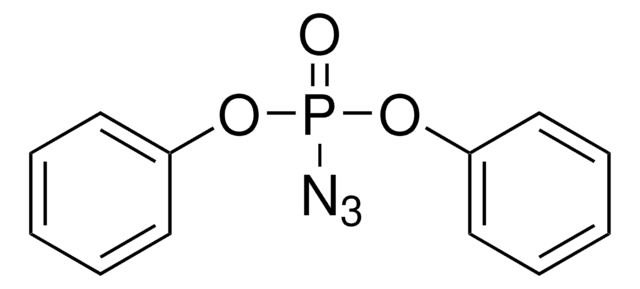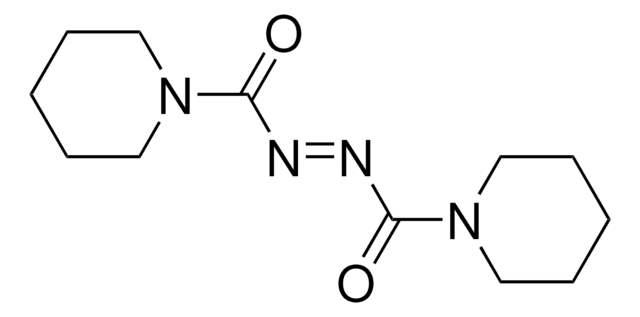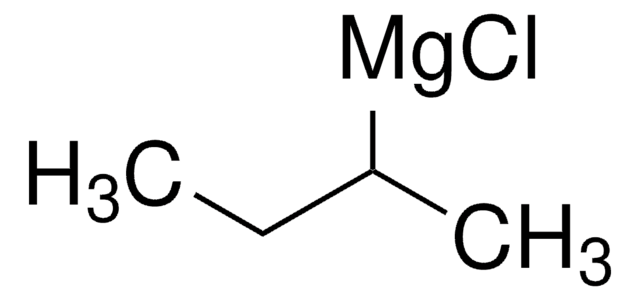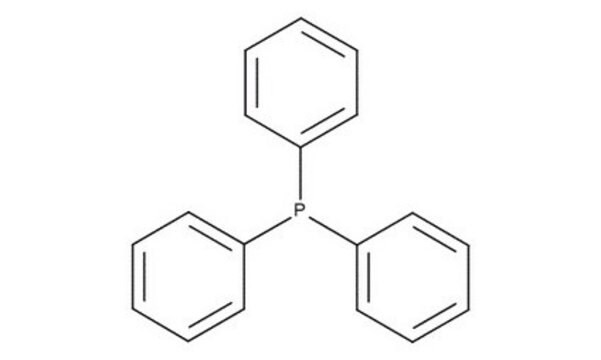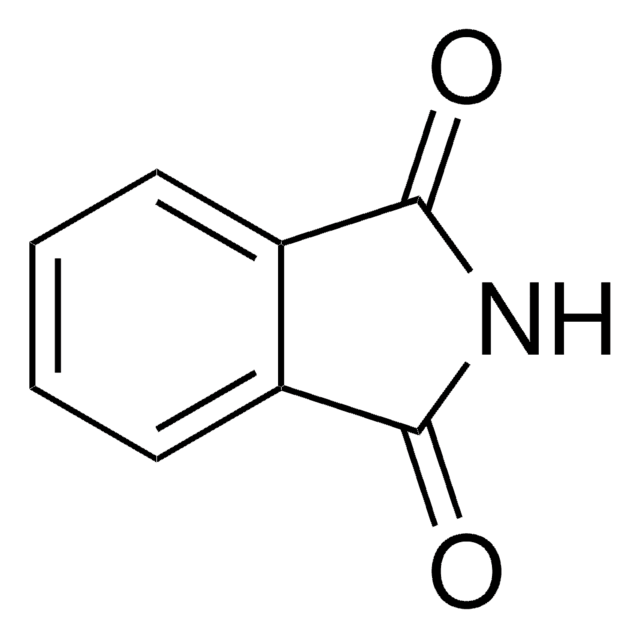Kluczowe dokumenty
225541
Diisopropyl azodicarboxylate
98%
Synonim(y):
DIAD, Diisopropyl azodiformate
About This Item
Polecane produkty
Poziom jakości
Próba
98%
Postać
liquid
zanieczyszczenia
≤2% dichloromethane
współczynnik refrakcji
n20/D 1.420 (lit.)
tw
75 °C/0.25 mmHg (lit.)
gęstość
1.027 g/mL at 25 °C (lit.)
grupa funkcyjna
azo
temp. przechowywania
2-8°C
ciąg SMILES
CC(C)OC(=O)\N=N\C(=O)OC(C)C
InChI
1S/C8H14N2O4/c1-5(2)13-7(11)9-10-8(12)14-6(3)4/h5-6H,1-4H3/b10-9+
Klucz InChI
VVWRJUBEIPHGQF-MDZDMXLPSA-N
Szukasz podobnych produktów? Odwiedź Przewodnik dotyczący porównywania produktów
Opis ogólny
Zastosowanie
- Chromenes resembling classical cannabinoids
- MK-3281 inhibitor of the hepatitis C virus NS5B polymerase
- Norbornene-based guanidine-rich polymers as mimcs of cell-penetrating peptides (CPP)
- Analogues of the Pseudomonas aeruginosa quorum-sensing molecule N-(3-Oxododecanoyl)-l-homoserine lactone with immunosuppressive but non-LasR-inducing properties
- Acceptor-donor-acceptor organic dyes for dye-sensitized solar cells
- 1,3-dioxane-2-carboxylic acid derivatives as PPARα/γ dual agonists
- Hydrazinophosphonates and hydrazinobisphosphonates via Mitsunobu and Arbuzov-type multicomponent application of the Morrison-Brunn-Huisgen betaine
Hasło ostrzegawcze
Warning
Zwroty wskazujące rodzaj zagrożenia
Zwroty wskazujące środki ostrożności
Klasyfikacja zagrożeń
Aquatic Chronic 2 - Carc. 2 - Eye Irrit. 2 - Skin Irrit. 2 - STOT RE 2 - STOT SE 3
Organy docelowe
Respiratory system
Kod klasy składowania
10 - Combustible liquids
Klasa zagrożenia wodnego (WGK)
WGK 2
Temperatura zapłonu (°F)
222.8 °F
Temperatura zapłonu (°C)
106 °C
Środki ochrony indywidualnej
Eyeshields, Faceshields, Gloves, type ABEK (EN14387) respirator filter
Wybierz jedną z najnowszych wersji:
Masz już ten produkt?
Dokumenty związane z niedawno zakupionymi produktami zostały zamieszczone w Bibliotece dokumentów.
Klienci oglądali również te produkty
Produkty
One of the most powerful and widely used carboncarbon bond forming reactions in organic synthesis is the Mitsunobu reaction.
Nasz zespół naukowców ma doświadczenie we wszystkich obszarach badań, w tym w naukach przyrodniczych, materiałoznawstwie, syntezie chemicznej, chromatografii, analityce i wielu innych dziedzinach.
Skontaktuj się z zespołem ds. pomocy technicznej
